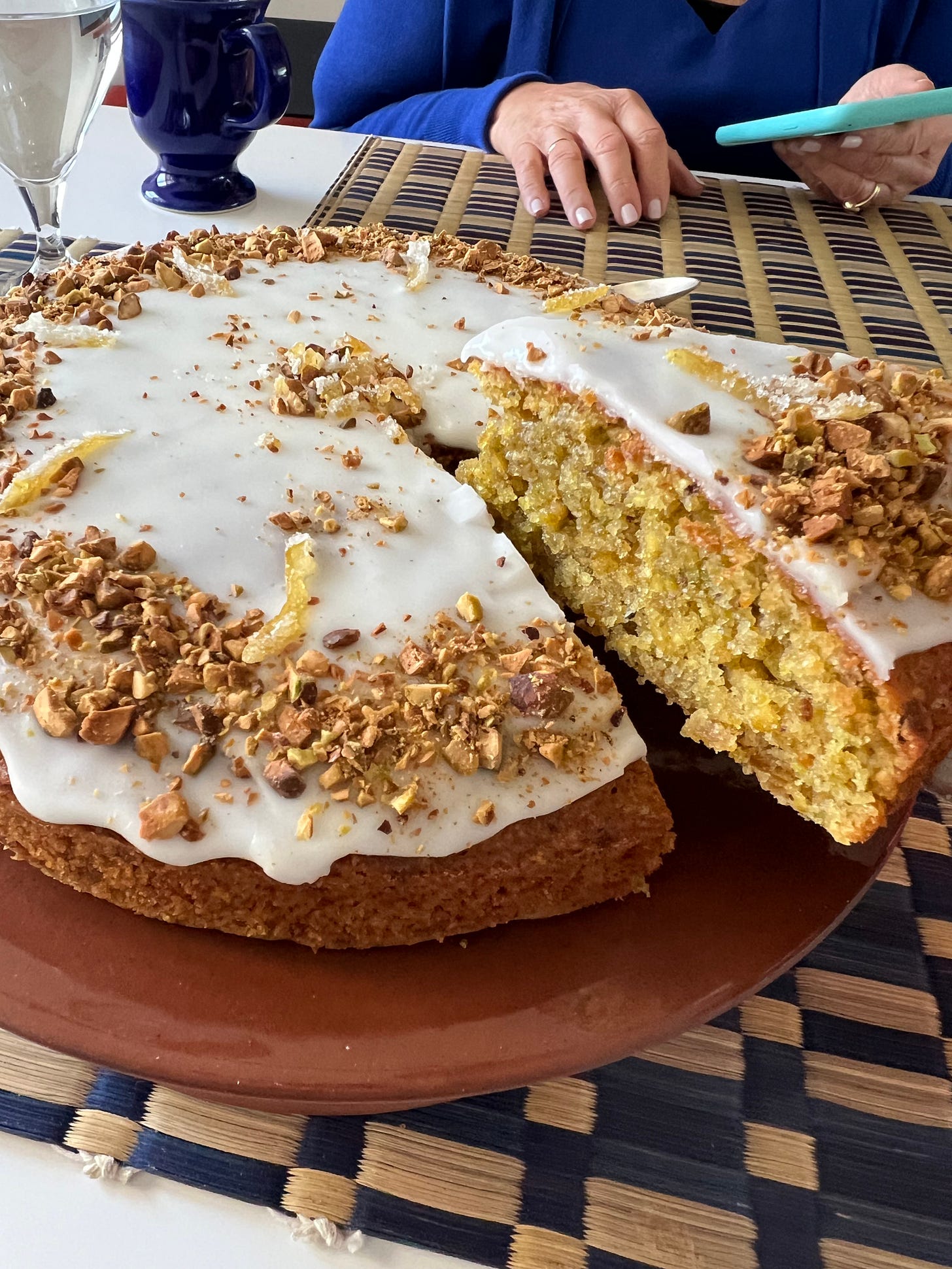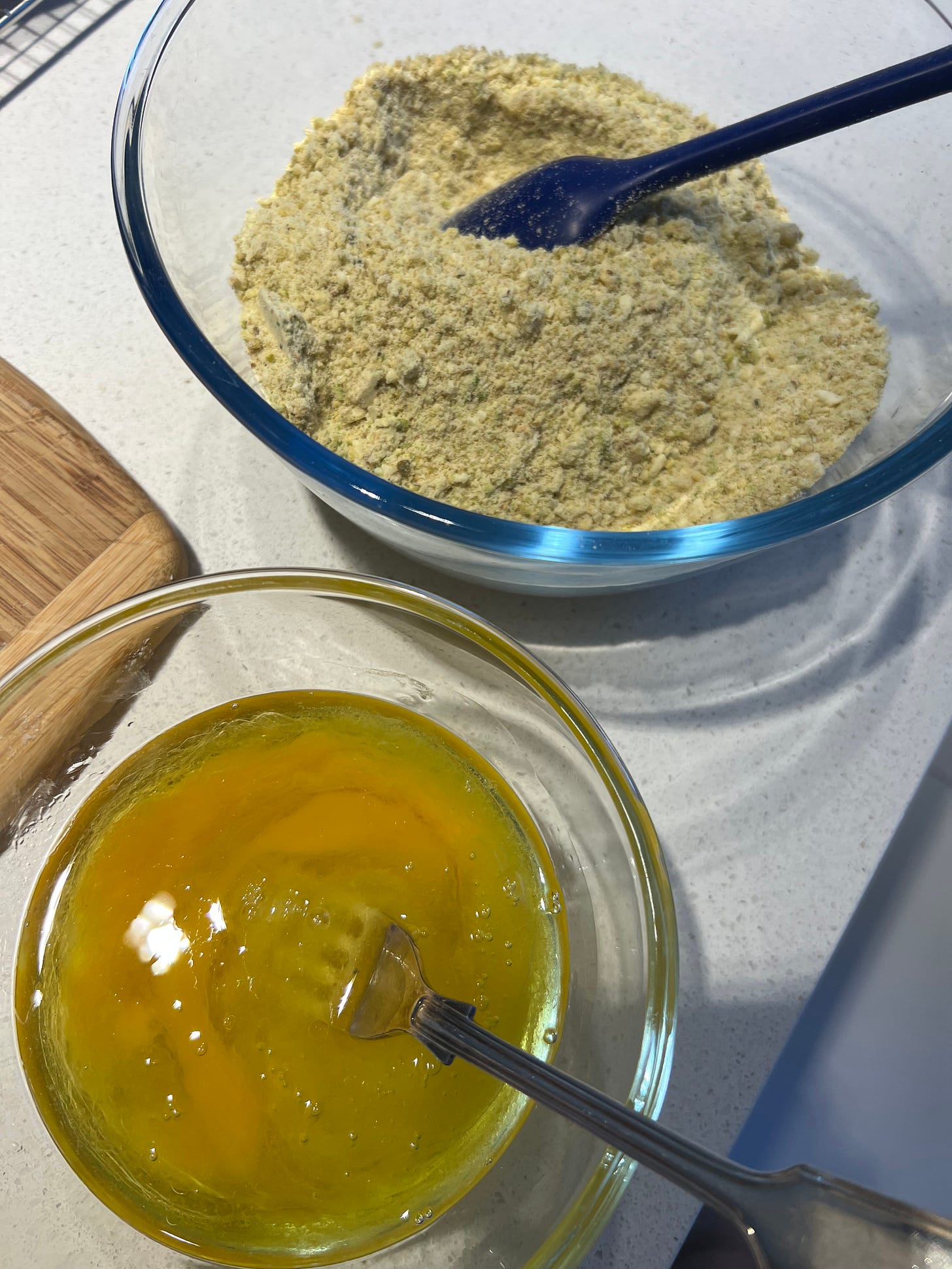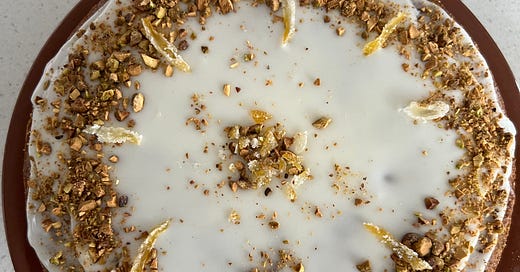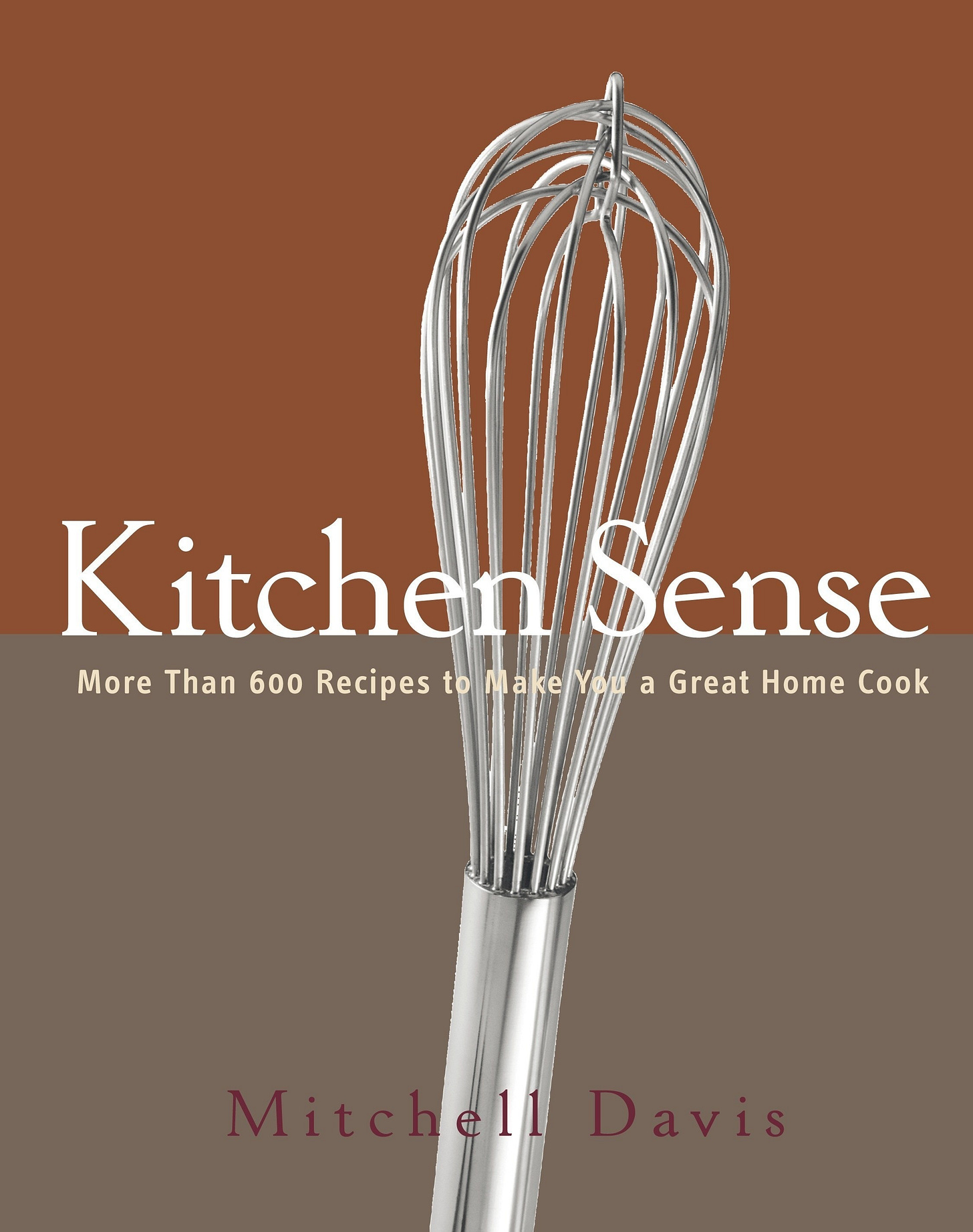Issue #102: A Divine Pistachio Cake
A Recipe Arrives from a Muse, Contemplating Conflict Cuisine, Our Special Promotion Continues
This week on my What’s Burning podcast I explore the political power of food with professor and policy wonk Johanna Mendelson Forman, whose background in foreign relations and passion for food have merged in her recent research on gastrodiplomacy and social gastronomy. Johanna has coined the phrase “Conflict Cuisine” to describe the role food plays in the political realm, where it can be weaponized to destabilize nations or used as a bridge to bring people together. We discuss a wide range of related topics, including her recent articles on the state of restaurants in Ukraine and the food of North Korea. Have a listen to our conversation by clicking below, or wherever you get your podcasts.
I’ve been told I post too frequently on Instagram @kitchensense. I understand that there are proven social media protocols to maximize followers and likes, but I guess I’m just too busy and/or too impulsive to abide by them. I post food I think might be interesting to some folks when I see it in front of me, often before I dig in, rather than waiting for the right time of day or any particular cadence of engagement. Nate often remarks, “You’re so fast!”
I’m also told I should post more pictures of people, that all I post is what I’m eating or cooking, rarely anyone enjoying it. This, too, goes against social media best practices, the “social” part apparently referring to “people.” But I’m of the age I still find it awkward to interrupt every conversation, every run in with an old chef friend, every interaction with someone I know and certainly those I don’t, in order to take a selfie. Call me old fashioned.
I know, I know, I should post more videos, too.

While I’m at it, I should also say that I’ve never taken money for a mention or anything for free in exchange for a post. I’ve begun to notice lately that everyone, even people I admire whose recipes I really like, seems to be paid for content of some kind or another. The other day I was reading an Instagram recipe that included details about the air-cooling system of the poster’s refrigerator, and I thought, “Wow, everyone really is getting stuff for free.” There was no mention of a “paid partnership” anywhere.
I’m not judging anyone who makes their living as a content creator and sells their reach as income, whether in cash or in kind. (Although I might suggest you read this fascinating article about the natural lifecycle, i.e., devolution, of paid media platforms. Spoiler alert: It isn’t pretty.) But I did realize that because I often tag a restaurant, producer, or brand, folks might think those mentions were paid. They are not. I’m merely trying to bring some attention to those I think deserve it.
As a social media dinosaur, when the response to a recipe seems outsized compared to everything else I post, I take notice. Way back when I started this newsletter, I posted a photo of a whole-roasted cauliflower served on labne that, in relation to my other posts, went viral (I think it got over 100 likes). Consequently, it was one of the first recipes I included in my new newsletter.
Issue #4: A Head Above the Rest: Whole-Roasted Cauliflower with Labne
Welcome back to Kitchen Sense, my new newsletter of recipes, cooking advice, and thoughts about food. I hope you enjoy it. If you do, please share the link with your family, friends, and fellow cooks. If this is your first issue, you missed the best
And then last week I posted this pistachio cake, in which many people seemed to take interest.
The original recipe for this unusual cake came from @historicalitalianfood, Karima Moyer-Nocchi, a food historian, author, and professor of modern languages at the University of Siena in Tuscany. (I only know her from Instagram.)
It caught my eye for a couple of reasons. First, I love the combination of pistachio and cardamom, which evokes the Middle East. I also liked the idea of a cake that uses dry sourdough bread or breadcrumbs, as I have a lot of that lying around. What’s more, you start baking it in a cold oven (something I’ve only done while making popovers, per Marion Cunningham’s recipe in The Fannie Farmer Baking Book). And the story of the recipe’s inception stood out. In her post, @historialitalianfood wrote:
The idea for this cake descended upon me all at once like an avalanche. It appeared as a whole recipe. Back in the days when I wrote poetry (alas, I have lost my muse!), poems used to come in the same way.
Who wouldn’t want to try that?
Turns out, the cake is delicious. It would go perfectly after a meal in which that whole-roasted cauliflower was served. I adapted the recipe a little for what I had on hand (candied Buddha’s hand citrus, instead of orange zest) and the way I work (I just dumped everything into the food processor to grind it up), as well as for the flavors I like (orange blossom water in the glaze). And then I tested it again with Imperial measurements.
You can learn more about professor Moyer-Nocchi and her work at her website, The Eternal Table. In the meantime, make this cake.
RECIPE: Divine Pistachio Cake
(Makes one 8-inch cake, serving 6 to 8)
For the cake:
150g (about 1 1/2 cups) pistachio meats, both raw or roasted (but unsalted) will work
40g (1/4 cup, 1 1/2 ounces) breadcrumbs or dried sourdough bread torn or cut into small pieces
100g (1/2 cup) sugar
100g (3 ounces) white chocolate, chopped
40g (1/3 cup) all-purpose flour
Scant 1/2 teaspoon baking powder
1/8 teaspoon baking soda
1/2 teaspoon kosher salt
1/2 teaspoon ground cardamom
40g (1 1/2 ounces) candied citrus peel, finely chopped (such as orange and/or lemon; I used Buddha’s hand)
92g (1/3 cup plus 2 tablespoons) extra-virgin olive oil
4 large eggs
For the garnish
1 cup powdered sugar
1 to 2 tablespoons heavy cream or whole milk
1 teaspoon orange blossom water
2 tablespoons or so toasted, chopped pistachios, for garnish
Addition candied zest, for garnish
Grease an 8-inch round cake pan and line with parchment.
In the bowl of food processor fitted with a metal chopping blade, combine the pistachios, breadcrumbs, sugar, white chocolate, flour, cardamom, and salt. Pulse until all finely ground to a flour-like consistency. Add the candied peel and pulse again until fully incorporated. Transfer the mixture to a medium bowl.

In a small bowl, beat together the olive oil and eggs. Add to the dry ingredients, mixing with a rubber spatula to combine. Transfer the batter to the prepared pan. Let settle until even. Place in a cold oven (you read that right), turn to 350°F., and bake until risen and done, 30 minutes in my toaster oven, up to 50 in my larger oven, which takes longer to come to temperature. Cool 10 minutes in the pan on a rack, then unmold to cool completely.
To prepare the glaze, in a small bowl, combine the powdered sugar with a tablespoon of heavy cream, the orange blossom water, and a dribble or two of water. Mix to a paste. If too thick, add more cream and/or water until the glaze is spreadable, but not too runny. Once the cake is totally cool, spoon the glaze on top and spread just until the edge. Garnish with the chopped pistachios and candied zest, as shown.
Our Special Promotion Continues
Don’t forget that our 100th issue promotion continues. Upgrade from a free subscription to a paid annual subscription before June 30 to save 20% off the rate ($45 per year) and receive a free, signed copy of my cookbook Kitchen Sense: More than 600 Recipes to Make You a Great Home Cook (shipping charges will apply to mailing addresses outside the continental U.S.).
Please note that since launching this special offer I’ve learned the Substack platform does not make it possible to invoke the reduced rate when switching from a paid monthly to a paid annual subscription. To do so you have to cancel your monthly subscription and resubscribe at the annual rate. Apologies for any inconvenience. Thank you, as always, for your continued support.







Wow! I'm obsessed with almond cakes, but this post has me rethinking my loyalties.